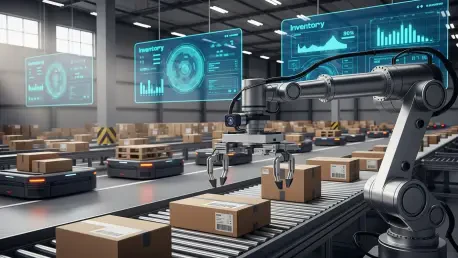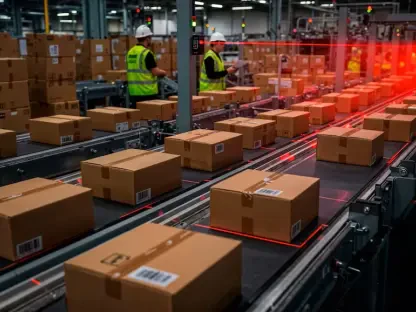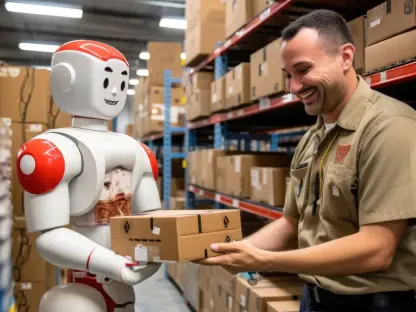The logistics and supply chain industry has undergone a significant transformation with the integration of Artificial Intelligence (AI) in warehouse management. As businesses strive for greater efficiency and cost-effectiveness, AI emerges as a pivotal solution to optimize warehouse processes. This review delves into the evolution of AI technology in warehouse management, examining its key components, features, and the impact it has made across various industries. By analyzing its current capabilities and potential future developments, this review aims to provide a thorough understanding of AI’s role in reshaping warehouse operations.
Analyzing AI in Warehouse Management
AI technology in warehouse management is fundamentally altering how warehouses operate globally. By employing AI, businesses can enhance operational efficiency, significantly reduce costs, and improve inventory management accuracy. This transformation has emerged from the need to address traditional logistical challenges, such as inefficiencies, human error, and high operational costs. The relevance of AI within the broader technological landscape is undeniable, signifying a shift toward automated, data-driven solutions that optimize warehouse functionalities.
Key Features and Core Components of AI in Warehouse Management
Automation and Robotics
Automation and robotics are integral components of AI in warehouse management, driving substantial improvements in operational efficiency and precision. Robotics automates repetitive tasks like picking and packing, reducing human error and labor costs. These systems seamlessly integrate with sophisticated AI algorithms to manage real-time data efficiently, ensuring smooth workflows. The significance of automation lies in its ability to handle extensive data sets, allowing warehouses to shift from reactive to proactive management practices.
Predictive Analytics
Predictive analytics plays a crucial role in AI-driven warehouse management, offering enhanced forecasting capabilities. By analyzing historical data and market trends, AI can accurately predict inventory requirements, thus preventing stockouts and overstocking. This foresight enables warehouses to align supply chains with market demands, boosting customer satisfaction and maintaining optimal cash flow. The real-world application of predictive analytics highlights its utility in transforming warehouse management to a more strategic, informed process.
Recent Innovations in AI Warehouse Management
Recent advancements in AI-driven warehouse management have unveiled new innovations and trends, shaping the trajectory of this technology. Emerging innovations include enhanced AI algorithms for adaptive learning, leading to smarter decision-making processes. Additionally, the increasing integration of Internet of Things (IoT) devices allows for improved connectivity and communication between systems. These developments highlight the dynamic nature of AI in the logistics sector, with industry behaviors adapting to keep pace with technological shifts.
Real-World Implementations and Use Cases
AI has found numerous real-world applications across various sectors, showcasing its versatility in enhancing warehouse operations. Major corporations like Amazon and Walmart successfully deploy AI systems to achieve significant efficiency and cost savings. Amazon, for example, employs AI-powered solutions to optimize transportation and logistics, enhancing inventory transport speed. Similarly, Walmart utilizes AI for improved demand forecasting and inventory management, resulting in reduced losses and more precise restocking strategies.
Challenges and Limitations of AI Implementation
Despite its promise, AI in warehouse management faces several challenges, including technical limitations and regulatory concerns. Technical hurdles often involve the integration of new AI systems with legacy infrastructure, which can be time-consuming and costly. Furthermore, regulatory issues surrounding data privacy and security present obstacles to widespread AI adoption. Efforts to mitigate these challenges focus on developing scalable AI solutions that are adaptable to existing systems while ensuring compliance with data protection regulations.
Future Prospects for AI in Warehouse Management
Looking ahead, the potential developments and advancements in AI warehouse management are promising. The technology is expected to provide breakthroughs in adaptive learning algorithms, autonomous robotics, and real-time data analytics. These innovations could result in even greater efficiency, agility, and cost savings. AI’s long-term impact on the logistics industry could redefine operational standards, fostering a more sustainable, efficient, and competitive environment for warehouses globally.
Conclusion and Verdict
In summary, AI in warehouse management represents a transformative force within the logistics and supply chain industry. Its ability to enhance efficiency, reduce costs, and provide accurate forecasting positions AI as an indispensable tool for modern warehouses. The current state of AI technology has already revolutionized warehouse operations, and its potential for future advancements is vast. As businesses continue to navigate ever-evolving challenges, AI’s role in warehouse management stands not only as a remarkable technological advancement but also as a strategic imperative for ensuring optimal performance and competitiveness.








